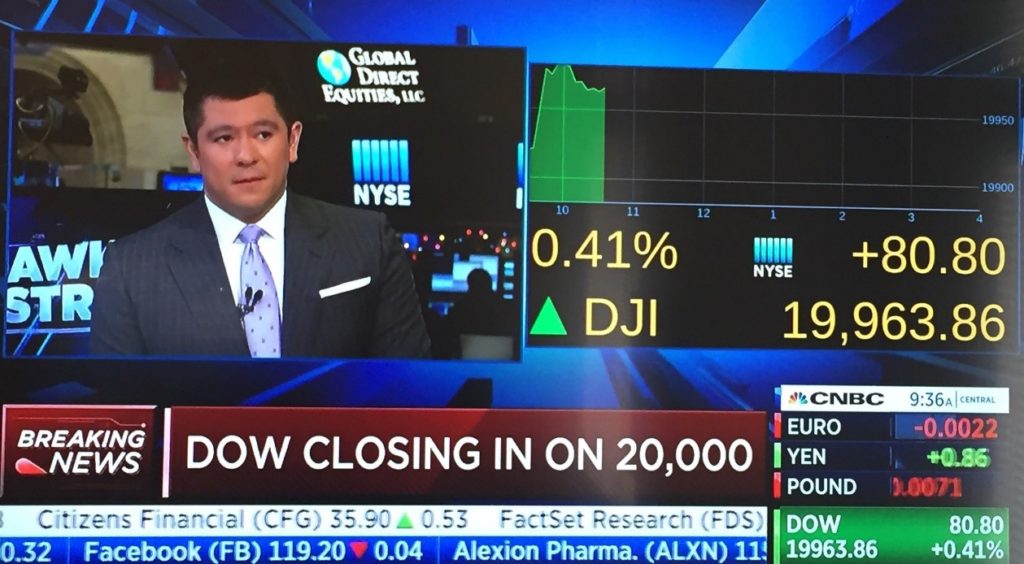In the last Investment Commentary sent out the day before the election, Calm Before the Cloudy Skies, we wrote, “It would be a cruel joke on Donald Trump if he accidentally won the election,” noting that he ran his campaign as if he wanted to lose and would be disappointed if he was elected president of the United States. If you are a regular reader of our Investment Commentary, you are used to the touch of sarcasm that is our hallmark.
Sarcasm notwithstanding, like most Americans, we were stunned with the consistency that Trump won almost every battleground state, one after another after another. Florida, North Carolina, Ohio, Michigan… and then Pennsylvania. Pennsylvania seemed to have Hillary Clinton in the lead all evening and then Trump took that one too.
So what happened? How did the unelectable get elected? How did a person with such a propensity to offend so many people get so many of those people to vote for him? How could someone so irritating and vulgar (his own party basically disowned him) become president of the United States of America? How could virtually every major poll show Clinton with a solid lead? And how many rhetorical questions can be asked in just one paragraph?
Strangest election ever.
Strangest presidential campaign ever.
We don’t know what it was like in your neighborhood, but we can’t remember a presidential election virtually devoid of political bumper stickers. Our memory may be fuzzy, but we feel like we could count on two hands the number of 2016 presidential bumper stickers we saw. Unlike previous presidential elections, these candidates made it seem politically incorrect to flaunt your preference for either one of them.
Voters weren’t proud the candidate they were voting for, but rather the one they were voting against. Virtually every voter we spoke to was not voting “for” a candidate as much as he or she was voting “against” a candidate. It was a rare Trump supporter who didn’t justify his or her opinion without pointing out how much he or she detested Clinton. And it was a rare Clinton supporter who didn’t miss an opportunity to remind anyone and everyone how disgusting Trump was.
But the most intriguing thing about the Trump election has been the behavior of the securities markets. DURING the election, futures contracts on the Dow Jones Industrial Average (DJIA) plunged as much as 800 points when it became evident that Trump might become the next president. For a brief moment, investors apparently perceived a Trump presidency as an economic catastrophe.
That panic was short-lived. By the time the markets opened November 9th, the 800-point drop was erased and stocks were on their way up.
Since the election, the S&P 500 is up over 6%! Investors went from thinking Trump represented economic catastrophe to thinking he is an economic godsend. (We think he is most likely somewhere in between.) And CNBC is obsessed every minute of the day with the DJIA hitting 20,000. As I am writing, this is what is on my television screen:

The DJIA needs to hurry up and hit 20,000 so CNBC can focus on something else.
Meanwhile, bonds are getting crushed. The most popular opinions seem to reflect that Trump’s economic policies will promote growth and thereby create inflation. Inflation brings with it higher interest rates so interest rates spike and bond prices plunge. The 30-year Treasury bond, which was yielding 2.6% the day before the election, has declined so much (over 12%), that it is now priced to yield 3.16%. In the bond world, that is a gigantic move in six weeks.
Last week, the Fed raised the Fed Funds rate ¼%, which was a colossal non-event and has virtually nothing to do with the increase in long-term interest rates. Don’t worry about it. Anyone with a pulse was expecting the Fed to raise the Fed Funds rate, so it was already baked in to market prices.
We think investors have overreacted to the prospects of growth and inflation.
We repeat – the president of the United States gets way too much blame when things are bad and way too much credit when things are good. There are much larger global economic forces at work. I said the exact same thing four years ago in the November 2012 Investment Commentary, Fiscal Mudslide.
The Trump victory did not erase $19 trillion in debt. It’s still there. We still owe it. It is still an enormous number that more than likely will hinder growth. Combine that with the massive debts owed by other major developed nations, and robust global economic growth just seems to be an ambitious notion.
The dollar is at a 14-year high. (Remember a few years ago when some “experts” were predicting the demise of the dollar?) A strong dollar is deflationary, not inflationary. It makes foreign goods cheaper for us to purchase. Also, it makes our goods more expensive to other nations, thereby slowing growth in the U.S.
Trump promises less regulation to businesses. Less regulation means less cost and fewer reasons to raise prices. Deflationary, not inflationary.
It is expected Trump will fight for lower corporate tax rates. Fewer taxes mean fewer reasons to raise prices. Same as above.
And Trump said that he is going to fight to bring down drug prices. (Good luck doing that.) Deflationary, not inflationary.
We could go on and on, but suffice it to say that we feel the recent spike in interest rates will be short-lived, and we will be slowly extending our duration in fixed income. We welcome the higher interest rates that our clients will receive because of this.
This information is provided for general information purposes only and should not be construed as investment, tax, or legal advice. Past performance of any market results is no assurance of future performance. The information contained herein has been obtained from sources deemed reliable but is not guaranteed.
